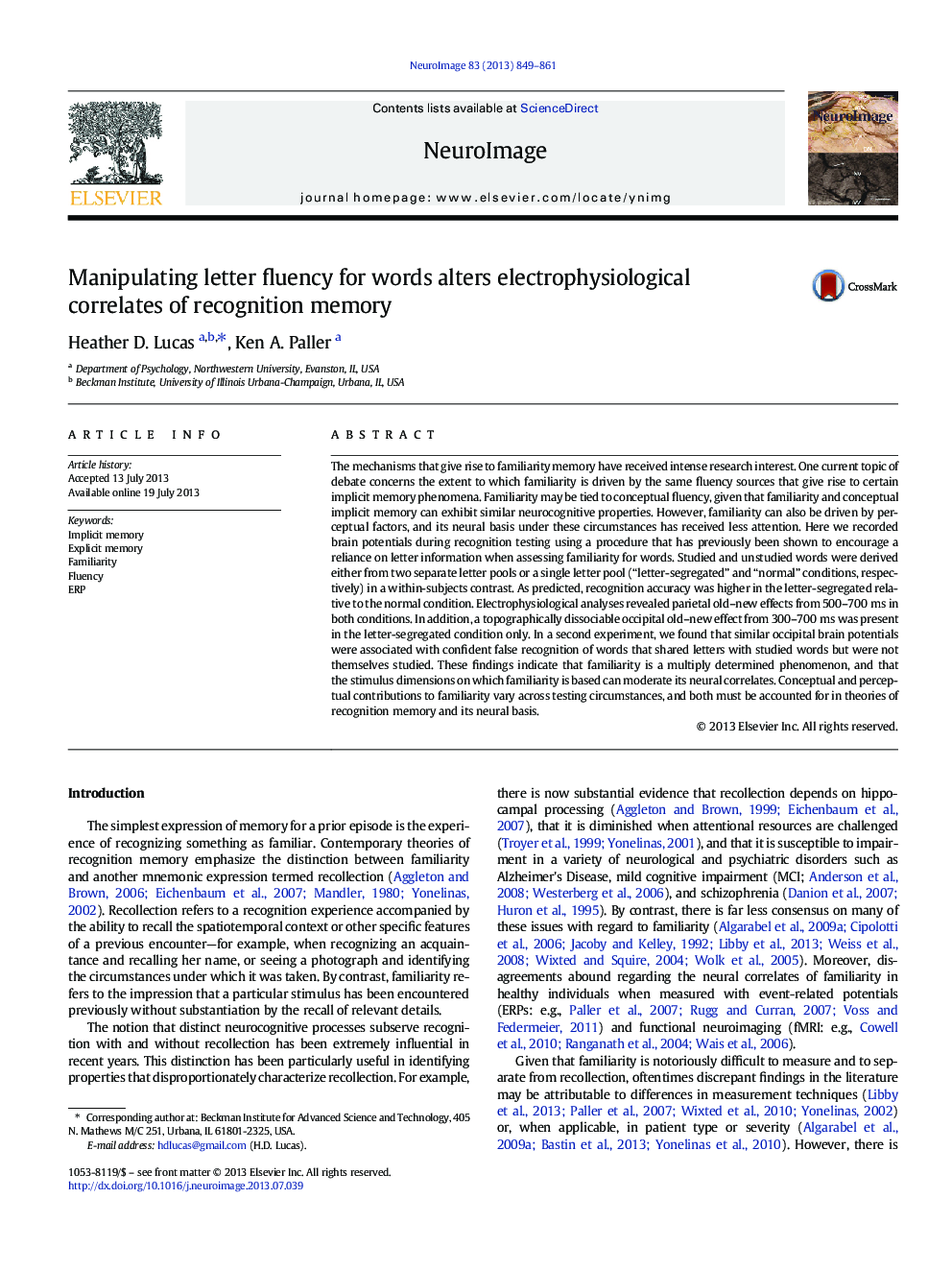| Article ID | Journal | Published Year | Pages | File Type |
|---|---|---|---|---|
| 6028273 | NeuroImage | 2013 | 13 Pages |
Abstract
The mechanisms that give rise to familiarity memory have received intense research interest. One current topic of debate concerns the extent to which familiarity is driven by the same fluency sources that give rise to certain implicit memory phenomena. Familiarity may be tied to conceptual fluency, given that familiarity and conceptual implicit memory can exhibit similar neurocognitive properties. However, familiarity can also be driven by perceptual factors, and its neural basis under these circumstances has received less attention. Here we recorded brain potentials during recognition testing using a procedure that has previously been shown to encourage a reliance on letter information when assessing familiarity for words. Studied and unstudied words were derived either from two separate letter pools or a single letter pool (“letter-segregated” and “normal” conditions, respectively) in a within-subjects contrast. As predicted, recognition accuracy was higher in the letter-segregated relative to the normal condition. Electrophysiological analyses revealed parietal old-new effects from 500-700Â ms in both conditions. In addition, a topographically dissociable occipital old-new effect from 300-700Â ms was present in the letter-segregated condition only. In a second experiment, we found that similar occipital brain potentials were associated with confident false recognition of words that shared letters with studied words but were not themselves studied. These findings indicate that familiarity is a multiply determined phenomenon, and that the stimulus dimensions on which familiarity is based can moderate its neural correlates. Conceptual and perceptual contributions to familiarity vary across testing circumstances, and both must be accounted for in theories of recognition memory and its neural basis.
Related Topics
Life Sciences
Neuroscience
Cognitive Neuroscience
Authors
Heather D. Lucas, Ken A. Paller,
